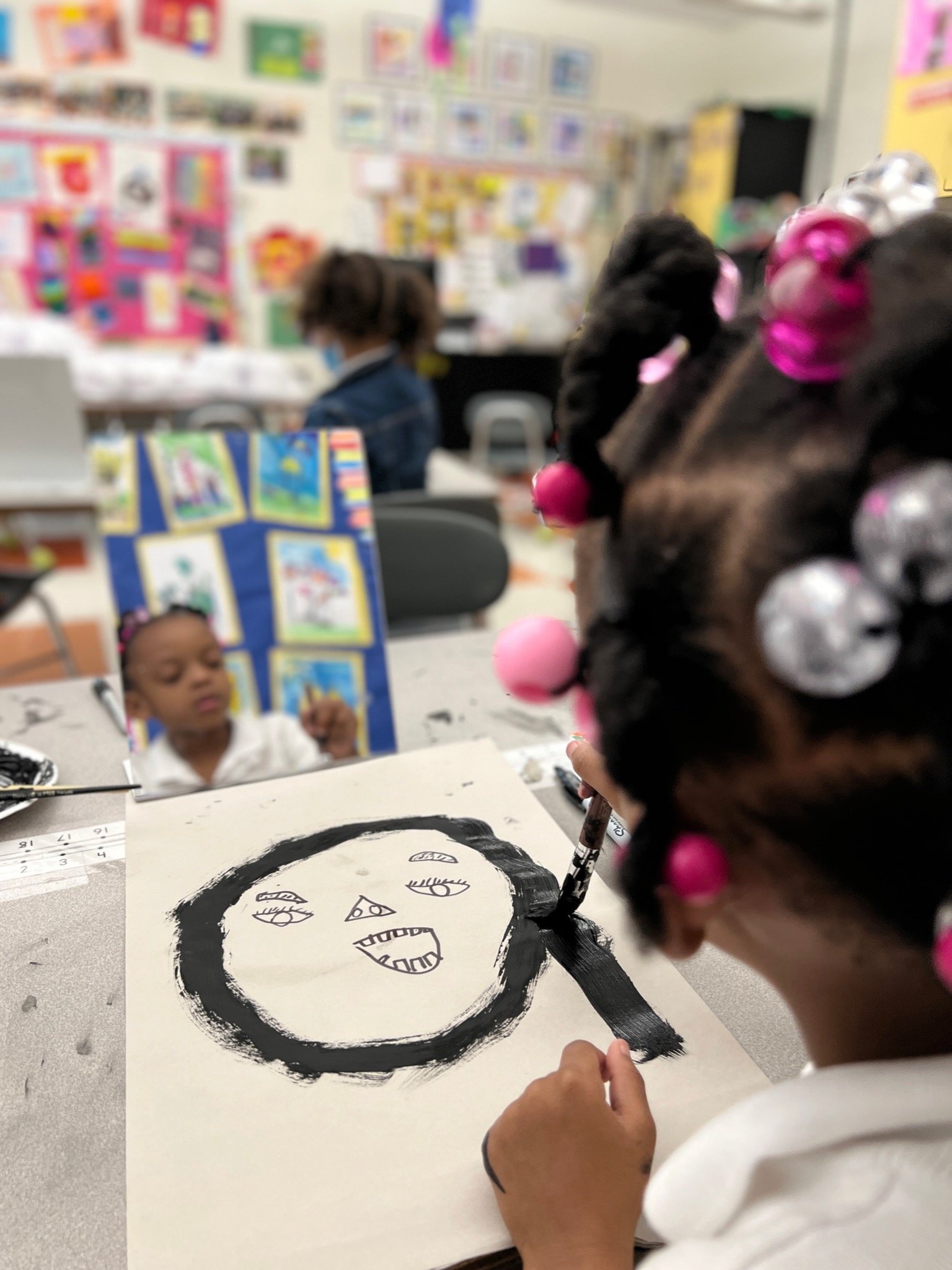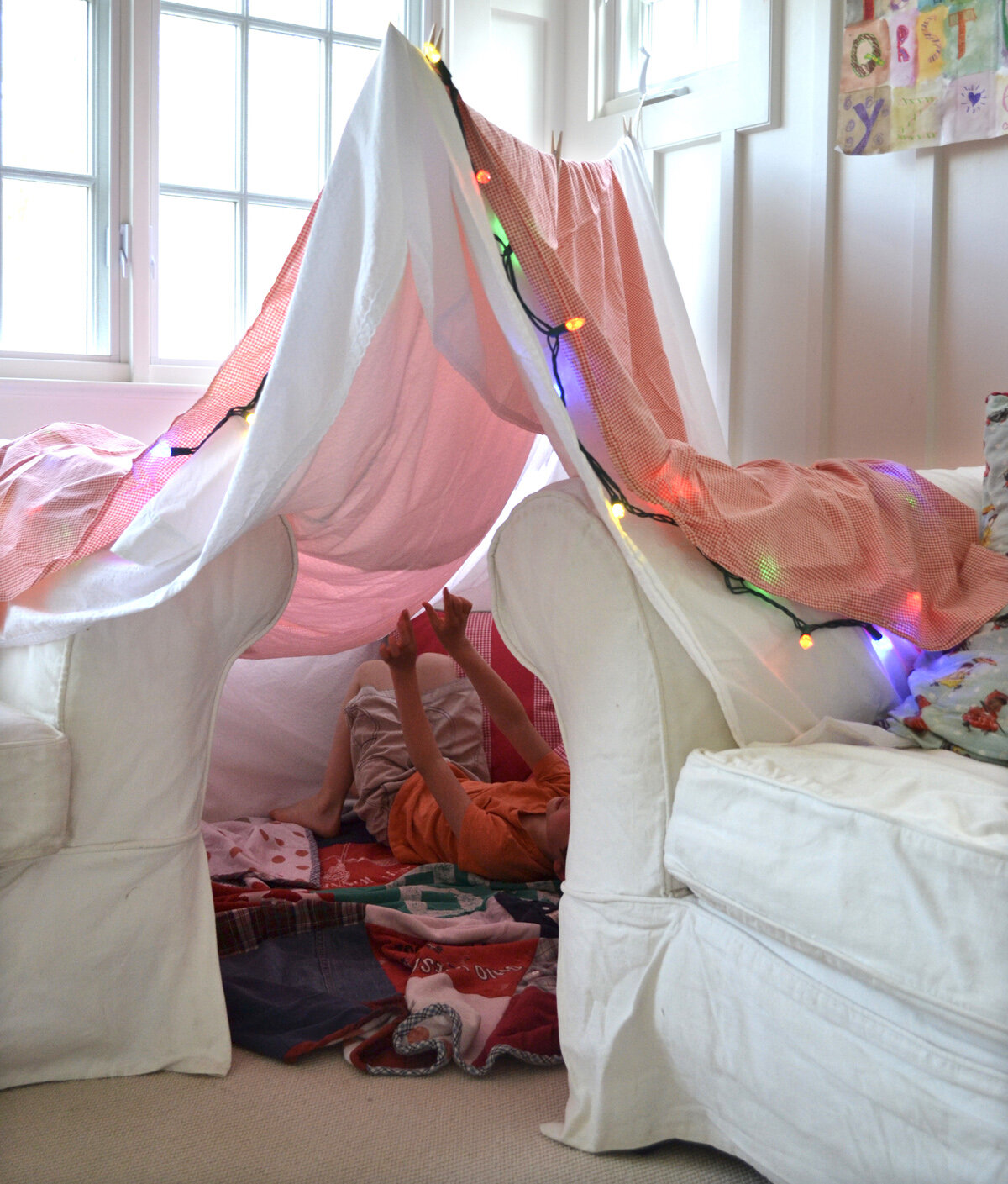Hello, and welcome to The Creativity Project! We are Bar and Shannon, educators, authors, and moms who value a childhood filled with play and creative exploration. Start here to read our mission statement, our thoughts and views about the importance of creativity in childhood, and an introduction to our guides.
Our Mission
We inspire creativity, empathy, and innovation at home and in the classroom by equipping families and educators with the skills, tools, and mindsets needed to facilitate playful and art filled experiences that honor childhood and establish lifelong habits of creativity.
Learning Happens Through Art & Play
Formalized learning has been pushed earlier and earlier over the years with the perception that it will make kids smarter, better prepared for more rigorous learning, and able to compete for the best jobs in the future. But the needs of children have never changed. They still need to make meaningful connections, build relationships with their family and friends, discover their place in the world, and establish a sense of belonging.
Kindergarten has become the new first grade, and 5-year olds are expected to do things that most are not developmentally ready to do. Long periods of seated instruction replace outdoor playtime, and the dress-up corner has all but disappeared from their classrooms. Half-day kindergarten with time for painting and play has given way to full-days where worksheets are more prevalent than blocks. Children develop at different rates and their natural learning process can’t be respected when academic goals are a guiding principle.
We lament the loss of a true, play-based, public school kindergarten, where curious young minds are given the freedom and respect to explore their environment at their own pace, take risks, and engage in meaningful work. When young children are given rich materials for creative play and art-making in a safe space that captivates both their minds and bodies, complex learning will happen.
A play-based, creativity-filled curriculum that extends well into early elementary boosts a child’s narrative and writing skills, strengthens vocabulary, and engages the brain in higher-level thinking such as questioning, generating ideas, and problem solving.
But more importantly, an education based on art and play that is child-led and eliminates worry about “right” or “wrong” brings joy and develops skills that worksheets and formalized schooling can’t teach, including imagination, non-verbal communication and how to tell a story, embracing diversity, and trusting your instincts.
Trust Your Child and They Will Flourish
We all want to raise thoughtful and curious problem-solvers who feel self-assured and are accepting of people who look and think differently. How do we do this? Nature certainly plays a part in who our children will become, and this we have no control over. It is through nurture, then, that we can influence the arc of childhood to bend towards joy and inner confidence.
All humans, big and small, want to be loved and accepted. Knowing that we need this as much as our child does will guide us to treat our children with the same patience and understanding that we require ourselves. Imagine how wonderful it would feel to grow up with unconditional acceptance, knowing you are free to discover the world, and your place in it, at your own pace.
When we decide to accept the way our children think, play, and create; allow them to make their own choices and discoveries; and understand that their mistakes and misdirections are part of their journey to their best selves, we become free to learn about and discover our child along with them.
Setting up an art space at home or in the classroom for self-driven, creative exploration is one way that we can practice trusting our children. Open-ended invitations that allow them to choose their own path without judgment are simple yet essential in the building and practice of trust. When our children feel that we trust them, when they hear the words “I trust you,”, they develop an inner-confidence that no school can teach.
Let us Help You
We are living in unprecedented times, and all of us are unsure and anxious about the school year ahead. You’ve landed at The Creativity Project and read this far because you prioritize imaginary play and art exploration during the early years, and you want to integrate a creative practice into your home or classroom this year (and beyond). Whether you’ve decided to homeschool, participate in your school’s distance learning plan, or simply want to infuse more creativity into your classroom or home, let us help you.
Imagine having a close friend who knows you are anxious about what to do this coming school year with your multi-age children. She has an art degree and is a former classroom teacher, plus she loves researching and putting together creative curriculums for her friends. She decides that she is going to be the best friend ever and create a monthly learning guide just for you. She fills the guide with daily, simple art and play invitations, a little literacy, math and science, suggestions on making bigger learning connections for older kids, a diverse and inclusive book list, creative snack ideas, rituals to ground your day and build connections, and she even throws in a living artist spotlight once a month for your family to discuss. Sounds amazing, right?
Well, WE ARE that best friend!!
We’ve done all the legwork to create a curriculum that is creative, inclusive, and honors your child’s thinking. For preschool children ages 3-5, our guides are all the “schooling” you will need for a fulfilling year at home. For elementary school children ages 5-8, you can use our guides as a supplement to keep those critically needed playful and creative habits alive and thriving. Or if you are homeschooling your older child, our guides can be used as an art curriculum that will build lifelong creative habits and inner confidence.
Our Monthly Guide Membership
Whether your child will be in school, learning at home, or something in between, we’d love for you to join our community of families who want to seize this opportunity to prioritize creativity through art and play.
With a Whole Child monthly membership of just $20 (or an Essentials membership for just $10) you will get our guides in your inbox a week before the month begins. You can also buy our Whole Child or Essential guides each month without a membership for $30 or $15 in our shop.
Here’s what’s inside each “Whole Child” 26-page, printable PDF guide:
Each month is based on a “Learning Story” that connects to every offering in the guide
20 invitations (one for each weekday of the month), 10 art and 10 play, that can be cut into cards and kept in a box as a resource to build upon
2 weekend family art projects
Master supply list
4 daily rituals to frame your weeks and connect with your child
8 creative snack ideas that complement the learning story
A diverse and inclusive book list
Extensions to dig deeper into the learning story for older children
A list of life skills learned through creative exploration
Basic curricular connections with math, literacy, science and social studies
An artist spotlight featuring living and working artists
Periodic templates that help with some of the projects
A one-page master calendar of the month that you can print and post on the art room wall for easy reference
Here’s what you will also receive with your “Whole Child” monthly membership:
Two additional PDF printables each month to support you and your family in building creative habits
Access to a private VIMEO channel where we post videos ranging from interviews to color mixing to cool art projects for your family
Weekly Art Playdate digital classes taught by an early childhood educator
Exclusive membership giveaway opportunities and discounts
With a membership to The Creativity Project, we will inspire and empower you to provide a setting for your child that allows them to explore, create, learn and grow. With these opportunities for safe creative experimentation, you can practice trusting your child to make their own choices in the journey to their best selves.
We are in this together!





